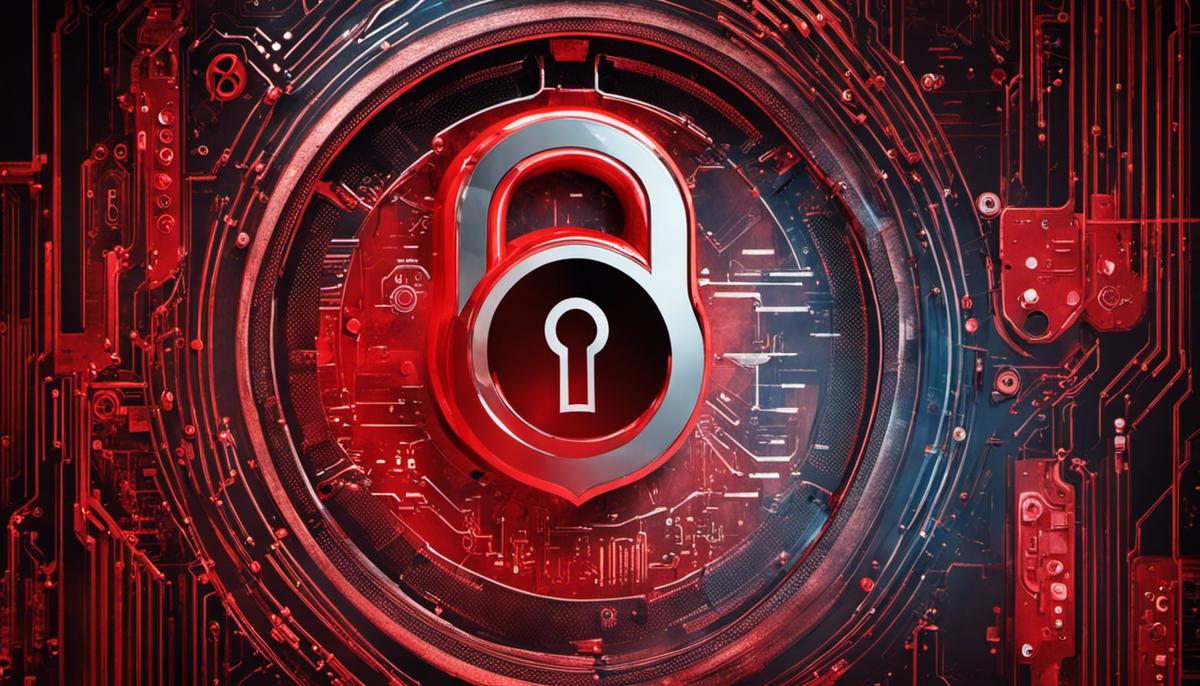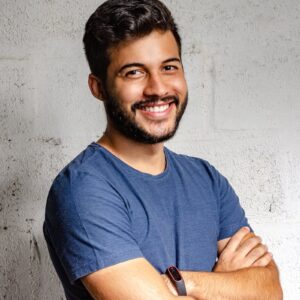Information cyber security is no longer an option but a robust and uncompromising necessity. This understanding crucially brings us to discuss the fundamentals of this vast and complex field, the emerging threats and latest trends, as well as the best proactive measures to ensure our data’s sanctity. This exploration aims not only to educate but also to stimulate a conversation on the significance of cyber security, highlighting contemporary threats, advanced techniques, and technologies used to reinforce security.
Basics of Information Cyber Security
Information Cybersecurity: A Necessity, not a Luxury in Today’s Digitized World
Information cybersecurity is nothing less than the beating heart of our ultra-connected society. With relentless advancement in technology and increasing dependence on digital platforms for many aspects of life, ensuring the safety of online information has transcended from mere convenience to an absolutely critical aspect of living in the 21st century.
At its core, information cybersecurity revolves around protecting systems, networks, and data from potential threats. This essentially means securing personal, professional, and governmental information from theft, damage, disruption, and unauthorized access.
Today’s digital landscape is an intricate web woven with countless connections, transfers, and exchanges of information. The exponential growth of this network opens up cavernous opportunities for cybercriminals, making information cybersecurity an absolute prerequisite. It’s not just about safeguarding privacy anymore; it’s about safeguarding lives as critical services move online, and it is about preserving trust in an increasingly connected world.
Several high-profile cases have blared the emergency sirens; the Yahoo data breach affected 3 billion users, while the Equifax data leak resulted in the exposure of 143 million US consumers’ data. These instances underline the massive potential for havoc when cybersecurity measures are inadequate.
A tech enthusiast knows that stumbling upon an “unhackable” system is as rare as spotting a unicorn in the wild. Every piece of software, be it a critical infrastructure system or a gaming application, is potentially vulnerable. This reality spurs the necessity to create barriers to prevent unauthorized influence over these systems.
Larger organizations, for instance, are especially alluring targets for cybercriminals. This makes it even more imperative for firms to bolt their ‘digital doors.’ When these barriers are robust, they deter attackers, forcing them to look elsewhere for easier targets. Investing in strong cybersecurity measures isn’t simply about protecting data but also about protecting an organization’s reputation, customer trust, and financial health.
In essence, information cybersecurity is a sort of invisible war being waged every second. Each logged-in user, each click, and each transaction can potentially open up vulnerabilities. In this tumultuous digital battlefield, perpetually on high alert, cybersecurity is the indispensable shield that will determine success or catastrophe.
While we continue being swept away by the roaring tide of technological advancement, the role of information cybersecurity only grows in prominence. Amidst warnings of potential security failures, it is high time for organizations and individuals alike to rise to the occasion, observe the perils, and secure their digital fortresses. There’s no overstating this—information cybersecurity isn’t discretionary; it’s a critical lifeline without which our digital landscape is exposed and alarmingly vulnerable. The key takeaway now is not to ask whether cybersecurity is necessary but rather to ensure it remains an absolute priority in our day-to-day digital engagements. No equivocation, no compromise.

Emerging Threats and Latest Trends in Cyber Security
Unveiling Emerging Cybersecurity Threats and the Evolving Countermeasures
In this high-speed digital era, an increasing roster of cybersecurity threats is causing a seismic shift across the landscape, constantly challenging the resilience of existing protection mechanisms.
One such potent and intricate threat is deepfakes. Fueled by artificial intelligence and deep learning, deepfakes are highly manipulated images or videos that impersonate legitimate entities, raising serious concerns about falsified information and identity spoofing. With potential misuses ranging from fraudulent transactions to instigating public unrest, timely detection and disarmament of deepfakes is now a priority among cybersecurity professionals.
The industry also faces the bane of mutable malware, a type of malicious software designed to alter its code as it propagates, making detection and eradication nearly impossible. This camouflage not only allows the malware to penetrate most security defenses, but it also threatens to compromise users’ data integrity and privacy.
As more and more digital interfaces become integrated with physical, real-world assets, the possibility of adversarial AI and machine learning attacks is growing exponentially. These interference techniques aim to outsmart AI security systems by subtly feeding them tweaked data, thereby manipulating their outcomes.
Despite these formidable challenges, the cybersecurity industry is meeting these threats head-on, harnessing advancements in technology to fortify digital ecosystems. Companies have begun integrating AI and machine learning as key components of their security strategies to detect and neutralize threats faster than humanly possible.
Emerging self-healing technologies aim to revolutionize cybersecurity by enabling systems to detect attacks, assess damage, repair vulnerabilities, and restore themselves to normal operations without human intervention, thereby reducing potential downtimes.
Endpoint detection and response (EDR) tools are gaining widespread adoption as they provide real-time monitoring and threat response. EDR tools are designed to detect any malicious activities at the end-user level, providing a comprehensive ground-level defense against infiltration attempts.
A stringent emphasis is also being placed on upskilling cybersecurity professionals, embedding them with the latest strategies, tools, and awareness necessary to counter evolving threats. A testimony to this is the proliferating number of cybersecurity training programs and certifications on offer.
Furthermore, a paradigm shift towards a ‘security by design’ principle is evident, whereby cybersecurity is becoming an integral part of the software design and development process rather than an afterthought.
In conclusion, the escalating complexity of cyber threats necessitates a correspondingly robust and innovative defense. By converging cutting-edge technology with proactive strategies and trained professionals, the cybersecurity industry is steadily transforming challenges into opportunities for enhancing digital security. As the digital world advances, the industry will continue to refine and reimagine the dynamics of cybersecurity. After all, the digital battlefield is ever-changing, and our defense should evolve accordingly.

Best Practices and Advanced Techniques in Information Cyber Security
The next wave of security measures lies in the exciting intersection of technology and ingenuity. This article explores how technology provides immediate solutions in an ever-evolving landscape of cybersecurity threats, advancing exponentially and intelligently to outsmart the most sophisticated attempts of infiltration.
On the basic level, strong password policies stand as the first line of defense. Enforcing alpha-numeric characters, case sensitivity, special characters, and rotation are still highly relevant. Countering phishing attacks among employees can be achieved by regular training and simulated phishing attacks to test employee resilience.
However, threats have evolved to be more persistent and stealthy; from mutable malware that constantly changes its code to evade detection to adversarial AI attacks that trick machine learning models to deepfakes that synthetically fabricate realities, the cybersecurity landscape is constantly on its toes.
Subsequently, our defensive arsenal should evolve as well, making room for AI-enhanced security systems. It’s not a question of ‘if’. Rather it’s ‘when’ AI and machine learning integrate seamlessly into cybersecurity strategies, effectively predicting and quickly responding to threats. These technologies can analyze patterns and behaviors in colossal amounts of data, something simply impossible for humans.
Endpoint detection and response (EDR) tools represent another crucial security measure. By collecting and storing endpoint data followed by real-time analysis, EDR identifies potential threats and directs immediate response actions, effectively halting any intrusion in its tracks.
Notably, cybersecurity isn’t solely a technology issue. It’s also a skills issue. Upskilling cybersecurity professionals to handle next-gen threats is imperative. Cybersecurity training programs and certifications are now not just valuable but vital for organizations wanting to stay ahead of cyber threats.
Embedding ‘Security by Design’ principles into business operations and software development life cycles can safeguard against vulnerabilities from an early stage, encouraging inbuilt secure coding practices. This ensures security isn’t an afterthought but an integral part of the software design and programming.
Self-healing technologies in cybersecurity, still an emerging field, offer tantalizingly powerful protective potential. They function by automatically detecting and fixing system abnormalities adapting and updating defenses to better respond to future attacks.
As technology relentlessly advances, our attention to cybersecurity measures should mirror in intensity. Balancing both basic and advanced mechanisms, technology aids in the critical task of warding off relentless cyber threats, adding not just another layer of protection but an entire fortress of defenses. It is the indispensable shield in our invisible war for information security.

The world we navigate today is interconnected on a level unprecedented in human history, making the subject of information cyber security of universal relevance and concern. Cyber threats remain a perilous challenge, consistently evolving in intensity and sophistication. However, the ongoing developments in cyber security technology and practices, from basic tools like firewalls and antimalware to advanced systems powered by AI and machine learning, provide us with strategic defenses. Implementing robust security measures can safeguard our digital territories, whether we are protecting personal information or corporate data. Let us all realize the importance of cyber security in our daily lives and foster a safer digital landscape for everyone.

